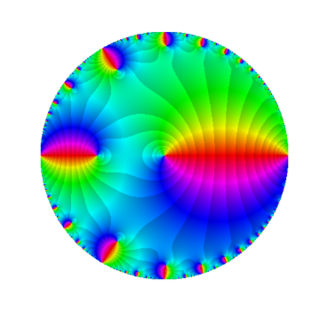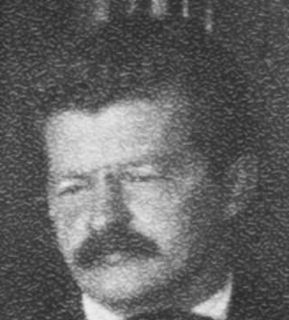This page is based on this
Wikipedia article Text is available under the
CC BY-SA 4.0 license; additional terms may apply.
Images, videos and audio are available under their respective licenses.

In mathematics convolution is a mathematical operation on two functions to produce a third function that expresses how the shape of one is modified by the other. The term convolution refers to both the result function and to the process of computing it. Some features of convolution are similar to cross-correlation: for real-valued functions, of a continuous or discrete variable, it differs from cross-correlation only in that either f (x) or g(x) is reflected about the y-axis; thus it is a cross-correlation of f (x) and g(−x), or f (−x) and g(x). For continuous functions, the cross-correlation operator is the adjoint of the convolution operator.
In number theory, a Liouville number is a real number x with the property that, for every positive integer n, there exist integers p and q with q > 1 and such that
The Liouville function, denoted by λ(n) and named after Joseph Liouville, is an important function in number theory.
In mathematical analysis, Hölder's inequality, named after Otto Hölder, is a fundamental inequality between integrals and an indispensable tool for the study of Lp spaces.
In probability theory, Markov's inequality gives an upper bound for the probability that a non-negative function of a random variable is greater than or equal to some positive constant. It is named after the Russian mathematician Andrey Markov, although it appeared earlier in the work of Pafnuty Chebyshev, and many sources, especially in analysis, refer to it as Chebyshev's inequality or Bienaymé's inequality.
In mathematical analysis, a function of bounded variation, also known as BV function, is a real-valued function whose total variation is bounded (finite): the graph of a function having this property is well behaved in a precise sense. For a continuous function of a single variable, being of bounded variation means that the distance along the direction of the y-axis, neglecting the contribution of motion along x-axis, traveled by a point moving along the graph has a finite value. For a continuous function of several variables, the meaning of the definition is the same, except for the fact that the continuous path to be considered cannot be the whole graph of the given function, but can be every intersection of the graph itself with a hyperplane parallel to a fixed x-axis and to the y-axis.
In linear algebra, functional analysis, and related areas of mathematics, a norm is a function that assigns a strictly positive length or size to each vector in a vector space—except for the zero vector, which is assigned a length of zero. A seminorm, on the other hand, is allowed to assign zero length to some non-zero vectors.

In mathematics, a Lambert series, named for Johann Heinrich Lambert, is a series taking the form
In mathematics, a matrix norm is a vector norm in a vector space whose elements (vectors) are matrices.
In mathematics, weak convergence in a Hilbert space is convergence of a sequence of points in the weak topology.
In mathematics, the Kolmogorov continuity theorem is a theorem that guarantees that a stochastic process that satisfies certain constraints on the moments of its increments will be continuous. It is credited to the Soviet mathematician Andrey Nikolaevich Kolmogorov.
In mathematical analysis, the Schur test, named after German mathematician Issai Schur, is a bound on the
operator norm of an integral operator in terms of its Schwartz kernel.
In mathematics, in the field of functional analysis, the Cotlar–Stein almost orthogonality lemma is named after mathematicians Mischa Cotlar
and Elias Stein. It may be used to obtain information on the operator norm on an operator, acting from one Hilbert space into another
when the operator can be decomposed into almost orthogonal pieces.
The original version of this lemma
(for self-adjoint and mutually commuting operators)
was proved by Mischa Cotlar in 1955 and allowed him to conclude that the Hilbert transform
is a continuous linear operator in
without using the Fourier transform.
A more general version was proved by Elias Stein.
In functional analysis, the dual norm is a measure of the "size" of each continuous linear functional defined on a normed vector space.
In mathematics, particularly numerical analysis, the Bramble–Hilbert lemma, named after James H. Bramble and Stephen Hilbert, bounds the error of an approximation of a function
by a polynomial of order at most
in terms of derivatives of
of order
. Both the error of the approximation and the derivatives of
are measured by
norms on a bounded domain in
. This is similar to classical numerical analysis, where, for example, the error of linear interpolation
can be bounded using the second derivative of
. However, the Bramble–Hilbert lemma applies in any number of dimensions, not just one dimension, and the approximation error and the derivatives of
are measured by more general norms involving averages, not just the maximum norm.
In mathematics, the class of Muckenhoupt weights Ap consists of those weights ω for which the Hardy–Littlewood maximal operator is bounded on Lp(dω). Specifically, we consider functions f on Rn and their associated maximal functions M( f ) defined as
In mathematical analysis, Lorentz spaces, introduced by George Lorentz in the 1950s, are generalisations of the more familiar
spaces.

Rodion Osievich Kuzmin was a Russian mathematician, known for his works in number theory and analysis. His name is sometimes transliterated as Kusmin. He was an Invited Speaker of the ICM in 1928 in Bologna.
In statistical learning theory, a representer theorem is any of several related results stating that a minimizer
of a regularized empirical risk function defined over a reproducing kernel Hilbert space can be represented as a finite linear combination of kernel products evaluated on the input points in the training set data.











